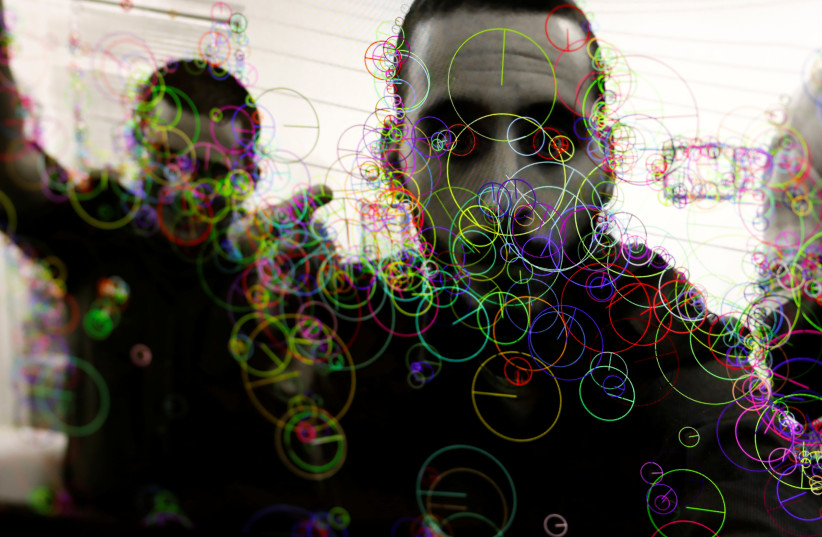Have you ever looked at a familiar face that seemed unrecognizable when turned upside down?
Researchers at Dartmouth College in New Hampshire had the opportunity to understand why when they met 42-year-old Claudio, whose head is rotated back almost 180 degrees, causing it to sit between his shoulder blades. They suggested that the reason people are so good at processing upright faces has arisen through a combination of evolution and experience. The findings appear in Cell Press’s journal iScience under the title, “The development of upright face perception depends on evolved orientation-specific mechanisms and experience.”
“The absence of an advantage for the face orientation that he's had more experience with suggests that our great sensitivity to upright faces results from both our greater experience with them"
Professor Brad Duchaine.
“Nearly everyone has far more experience with upright faces and ancestors whose reproduction was influenced by their ability to process upright faces, so it’s not easy to pull apart the influence of experience and evolved mechanisms tailored for upright faces in typical participants,” said the first author, psychology Prof. Brad Duchaine. “However, because Claudio’s head orientation is reversed to most faces that he has looked at, he provides an opportunity to examine what happens when the faces viewed most often have a different orientation than the viewer’s face.”
Researchers have long known from earlier studies that our ability to process faces drops or even plummets when a face is rotated 180 degrees. But it had been hard to determine whether the reason for that comes from evolutionary mechanisms that shaped our brains’ facial processing abilities gradually over time or simply because most of us primarily interact with people and see them with their face in an upright position.
The question was how Claudio’s altered viewpoint relative to the faces of others changes how he is able to detect and match them up? Or does it? The answer, they realized, would offer clues about the nature of face perception in people more generally.

Testing the theory
To find out, the researchers tested Claudio’s face-detection and identity-matching ability in 2015 and 2019. They also tested his recognition of Thatcherized faces: an illusion that occurs when a picture is turned upside down, but the features, like the mouth and eyes, are kept the right way.
It is named after the then-British prime minister Margaret Thatcher, on whose photograph the effect was first shown.
Their studies found that Claudio was more accurate than controls with inverted detection and Thatcher judgments, but scored similarly to controls with face identity matching. The researchers say the findings suggest that our ability with upright faces arises from a combination of evolutionary mechanisms and experience.
“Because Claudio appears to have had more experience with upright faces than upside-down faces and he has viewed faces from an upside-down vantage point, it’s interesting that he doesn’t do better with upright faces than inverted faces for face detection and face identity matching,” Duchaine said. “The absence of an advantage for the face orientation that he’s had more experience with suggests that our great sensitivity to upright faces results from both our greater experience with them and an evolved component that makes our visual system better tuned to upright faces than inverted faces.”
The psychologist and colleagues were surprised to get a different result when Claudio saw Thatcherized faces. In that case, Claudio performed better when those manipulated faces appeared upright. While the researchers say they don’t know why this happened, they suspect that the Thatcher effect arises from different visual mechanisms than facial detection and identity matching, and that those different mechanisms must have different developmental trajectories.
“We examined whether our impressive ability to perceive upright faces arises from evolved orientation-specific mechanisms, our extensive experience with upright faces, or both factors. To do so, we tested Claudio, who has seen more faces reversed in orientation to his own face than matched to it.
“Controls exhibited large inversion effects on all tasks, but Claudio performed similarly with upright and inverted faces in both detection and identity-matching tasks, indicating these abilities are the product of evolved mechanisms and experience. In contrast, he showed clear upright superiority when detecting Thatcherized faces, suggesting experience plays a greater role in this judgment. Together, these findings indicate that both evolved orientation-specific mechanisms and experience contribute to our proficiency with upright faces.”
Looking ahead, the researchers hope to discover more about this difference as well as other kinds of judgments people make when they see faces, including facial expressions, age, sex, attractiveness, eye gaze direction, trustworthiness, and more. Using measurements of what’s happening in Claudio’s brain when he sees faces, they also want to “see whether his current face processing depends on typical mechanisms.”
